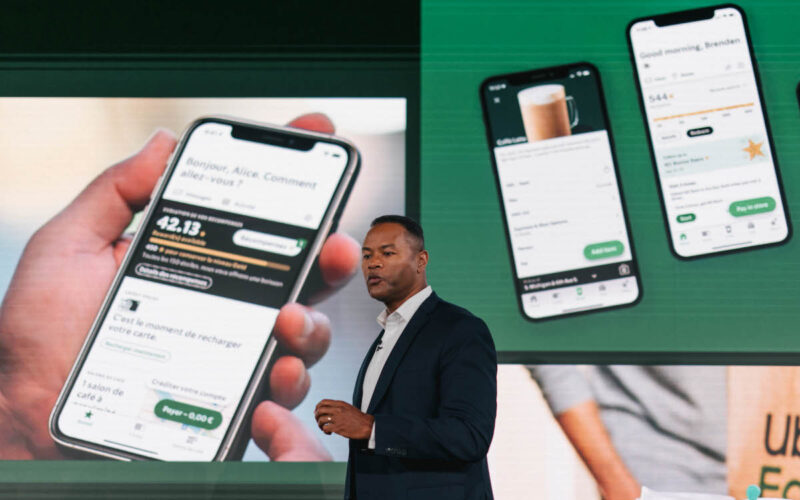Houston | Ordering via mobile app has become increasingly popular in QSR restaurants. Moving to mobile is not only a threat to digital signage – the need for digital menu boards and order terminals diminishes – but challenges the operations at Starbucks, McDonald's & Co.

Mobile Apps: Managing the Flood of Orders
Last week, Starbucks announced to replace its CEO – again. Sales of the Seattle-based coffee restaurant chain are no longer growing, the restaurants have lost their third-place coolness, and overstrained employees struggle to keep up with the never-ending flow of orders.
The flood of app orders – after all, 35 percent of all Starbucks orders are already placed online – is overwhelming the operations in the thousands of Starbucks restaurants. Preparing the drinks is already complicated enough, but app users usually order a lot of paid-for special requests, such as cold milk foam or syrup. This makes their preparation more time-consuming. Still, they are prioritized over in-store orders. This inevitably prolongs the waiting times for restaurant customers, especially in the morning hours, and raises frustration.

Chipotle shows how things could be done better: When the Mexican food QSR chain introduced its pre-order app, it also established separate preparation processes in the kitchens. Particularly complex dishes are limited to app order only. And robots are being tested to take over the time-consuming preparation of bowl dishes. Thanks to the many optimized processes, Chipotle has been able to grow extremely fast in recent years.
Now, Starbucks has parted ways with the current CEO, and, from September on, Chipotle CEO Brian Niccol will take over. Even before the new boss arrives in Seattle, Starbucks is starting to adjust its operational processes. Orders for specials and promotions, for instance, are temporarily blocked in the app and only available in the restaurant.
Starbucks is also planning to roll out new machines to speed up the preparation of drinks – up to 70 percent of drinks in the summer are cold drinks that do not contain coffee. The company also plans to build more drive-thru branches and equip existing restaurants with digital menu boards.
These are good news for the digital signage industry: more outdoor screens in the drive-thru and more digital menu boards in the restaurant. As far as we know, Starbucks currently does not consider introducing order terminals – sometimes instore experience and personal service are more important than pure efficiency.
